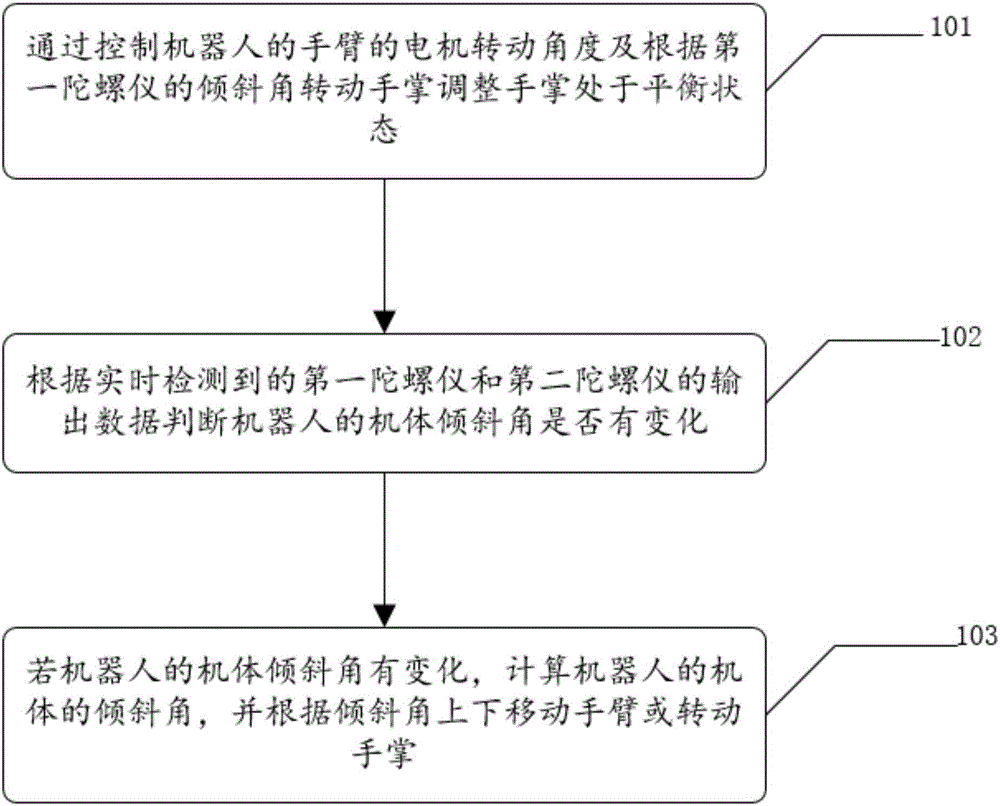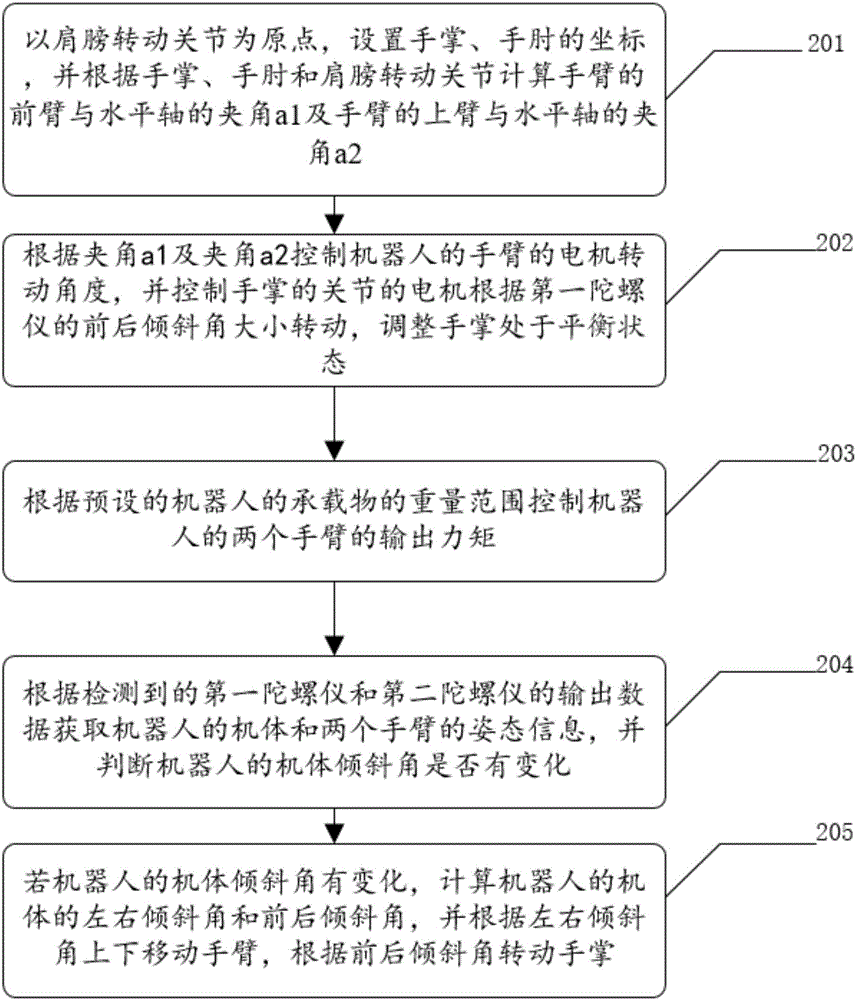Robot double-arm self-balance method and robot
A robot and self-balancing technology, applied in the field of robotics, can solve the problems of falling objects on the arms and the safety of the objects in the arms cannot be guaranteed, and achieve the effect of rapid response
- Summary
- Abstract
- Description
- Claims
- Application Information
AI Technical Summary
Problems solved by technology
Method used
Image
Examples
Embodiment Construction
[0045] The embodiment of the present invention provides a robot dual-arm self-balancing method and a robot, which are used to solve the problem that in the prior art, the service robot cannot maintain the balance of the dual arms and the objects on the dual arms fall due to the service robot carrying heavy objects or encountering the tilt of the body. Falling and damage, the safety of the items on the arms cannot be guaranteed technical problems.
[0046] In order to make the purpose, features and advantages of the present invention more obvious and understandable, the technical solutions in the embodiments of the present invention will be clearly and completely described below in conjunction with the accompanying drawings in the embodiments of the present invention. Obviously, the following The described embodiments are only some, not all, embodiments of the present invention. Based on the embodiments of the present invention, all other embodiments obtained by persons of ordi...
PUM
 Login to View More
Login to View More Abstract
Description
Claims
Application Information
 Login to View More
Login to View More - R&D
- Intellectual Property
- Life Sciences
- Materials
- Tech Scout
- Unparalleled Data Quality
- Higher Quality Content
- 60% Fewer Hallucinations
Browse by: Latest US Patents, China's latest patents, Technical Efficacy Thesaurus, Application Domain, Technology Topic, Popular Technical Reports.
© 2025 PatSnap. All rights reserved.Legal|Privacy policy|Modern Slavery Act Transparency Statement|Sitemap|About US| Contact US: help@patsnap.com



